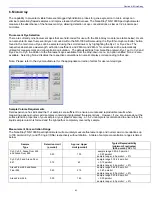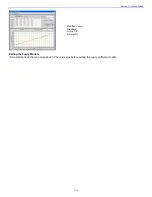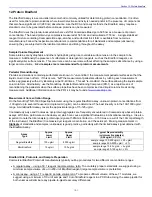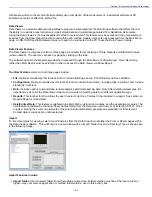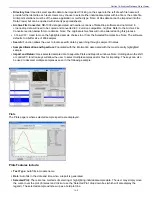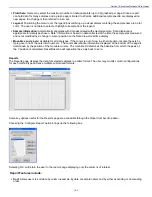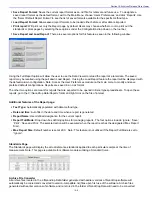
Section 11-Protein Lowry
11. Protein Lowry
The Modified Lowry Protein Assay is an alternative method for determining protein concentration based on the widely
used and cited Lowry procedure for protein quantitation. Like the BCA and Bradford Assays, the Modified Lowry Assay
requires standard curve generation each time it is run, before unknown proteins can be measured. The Modified Lowry
procedure involves reaction of protein with cupric sulfate in alkaline solution, resulting in formation of tetradentate copper-
protein complexes. The Folin-Ciocalteu Reagent is effectively reduced in proportion to the chelated copper-complexes
resulting in a water-soluble blue product that is measured at 650 nm and normalized at 405 nm. Pre-formulated reagents,
utilized in the assay, are available in kit form from numerous manufacturers. Follow their recommendations when mixing
the respective reagents at the time the assay is to be performed.
Sample Volume Requirements
Some proteins are hydrophobic and others hydrophilic giving rise to variable surface tension in the sample to be
measured. Additionally the presence of surfactants or detergents in reagents, such as the Bradford reagent, can
significantly alter surface tension. This occurrence can be overcome without affecting the sample’s absorbance by using a
larger sample volume.
A 2 ul sample size is recommended for protein measurements
.
Pedestal Reconditioning
Proteins and solutions containing surfactants are known to “un-condition” the measurement pedestal surfaces so that the
liquid column does not form. If this occurs, “buff” the measurement pedestal surfaces by rubbing each measurement
surface aggressively with a dry laboratory wipe 30-40 times. This will “re-condition” the surface allowing the liquid sample
column to form. Alternatively, use the NanoDrop Pedestal Reconditioning Compound (PR-1) as a rapid means of
reconditioning the pedestals when the surface properties have been compromised and liquid columns break during
measurement. Additional information about the PR-1 kit may be found at
www.nanodrop.com.
Measurement Concentration Range
On the NanoDrop
®
ND-1000 Spectrophotometer, the Modified Lowry assay can run from ~0.20 mg/ml up to 8.0 mg/ml.
Assay
Type
Approx.
Lower
Limit
Approx.
Upper
Limit
Typical Reproducibility
(minimum 5 replicates)
(CV= %)
Modified Lowry
0.2 mg/ml
4.0 mg/ml
±
2% (over entire range)
Modified Lowry Kits, Protocols, and Sample Preparation
Commercial Modified Lowry Protein kit manufacturers typically outline procedures for their assays.
Modified Lowry assay – using a 5:1 reagent / sample volume ratio.
•
To accurately prepare Standards, we suggest using a minimum sample volume of 20 ul and 100ul of Modified Lowry
reagent. Using the same pipettor for both volumes will eliminate any pipette-to-pipette accuracy differences.
•
After the initial 10 minute room temperature (RT) incubation period, add 10 ul of the Folin –Ciocalteu reagent and
incubate for 30 minutes at RT.
In addition to the kit reagents, protein standards (BSA) for generating a standard curve are also provided by the
manufacturer for the Modified Lowry method. Follow the manufacturer’s protocol for the assay including recommended
incubation times and temperature. Additionally, use the respective standard (e.g. BSA) and dilutions that cover the
analytical range (mg/ml) of interest. Note: Since the ND-1000 can measure higher protein concentrations, you may need
to supply your own protein standards at higher concentrations than provided by the manufacturer.
Unique Screen Features
View Standard Curve (F8):
selecting this button allows the user to view the standard curve at any time.
Sample Type:
choices are Reference, Standards 1-7, and Sample. The software will guide you to measure your
reference, then at least one standard before allowing measurement of samples. Reference samples refer to the dye
reagent without any protein added (ie the “0” sample).
11-1


